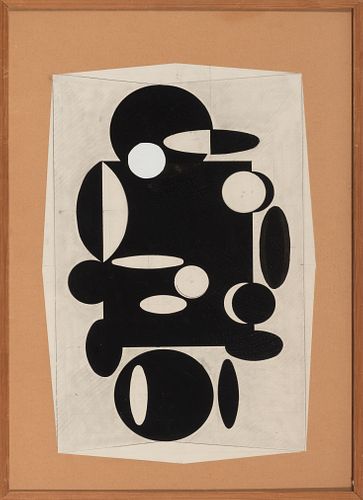VICTOR VASARELY (Pécs, Hungary, 1908 - Paris, 1997). "Untitled".
Lot 69
About Seller
Setdart Auction House
Carrer Aragó 346
Barcelona
Spain
Setdart Subastas was born in 2004 and is currently the first online art auction in Spain with solidity, prestige and reliability guaranteed by our more than 60,000 users. Setdart has a young, dynamic and enterprising team ready to successfully manage the purchase and sale of art works through custom...Read more
Categories
Estimate:
EUR€13,000 - EUR€15,000
$13,684.21 - $15,789.47
Absentee vs Live bid
Two ways to bid:
- Leave a max absentee bid and the platform will bid on your behalf up to your maximum bid during the live auction.
- Bid live during the auction and your bids will be submitted real-time to the auctioneer.
Bid Increments
| Price | Bid Increment |
|---|---|
| EUR€0 | EUR€10 |
| EUR€200 | EUR€25 |
| EUR€500 | EUR€50 |
| EUR€1,000 | EUR€100 |
| EUR€3,000 | EUR€200 |
| EUR€5,000 | EUR€500 |
| EUR€10,000 | EUR€1,000 |
| EUR€20,000 | EUR€2,000 |
| EUR€50,000 | EUR€5,000 |
About Auction
By Setdart Auction House
Oct 27, 2021
Set Reminder
2021-10-27 10:00:00
2021-10-27 10:00:00
America/New_York
Bidsquare
Bidsquare : 19th & 20th Century Paintings & Decorative Arts
https://www.bidsquare.com/auctions/setdart-auction-house/19th-20th-century-paintings-decorative-arts-7767
Setdart Auction House sofia@setdart.com
Setdart Auction House sofia@setdart.com
- Lot Description
VICTOR VASARELY (Pécs, Hungary, 1908 - Paris, 1997). "Untitled". Ink, watercolor, pencil and collage on paper. Work validated by Mr. Pierre Vasarely. Measurements: 46 x 30 cm; 58 x 40 cm (frame). In this piece the artist plays with the concept of darkness on the surface of the paper in which there are some blank spaces, thus enhancing the bichromy of the piece, and creating an image of great expressiveness and tension that is resolved by the conjunction of black and white. The artist has created on the surface of the paper, a composition whose form moves energetically, merging and separating from each other, in such a way that it suggests a kind of ordered chaos. Considered the father of Op Art, Victor Vasarely began his artistic training at the Muheely school, founded in Budapest by a student of the Bauhaus. He settled in Paris in 1930, where he created what is considered today as the first Op Art work, ""Zebra"" (1937). In Paris he worked as a graphic designer for advertising agencies. During this period his artistic style varied from figurative expression, towards a type of constructive and geometric abstract art, interested in the representation of perspective without vanishing points.between 1936 and 1948 he participated regularly in the Salon des Surindependents and in the Salon des Nouvelles Réalités. From 1948 he exhibited regularly at the Denise René Gallery. In the fifties his work approached the use of new materials and supports such as aluminum or glass. In the same way he began to make works of integration with space, such as Homage to Malevich. In the sixties he participated in numerous group exhibitions, such as The Responsive Eye at the Museum of Modern Art in New York, as well as solo exhibitions in Europe and America. Among the numerous awards he received throughout his life, the Guggenheim Prize (1964), the Art Critics of Brussels and the gold medal at the Milan Triennial stand out. In 1970 he was also named Knight of the Order of the Legion of Honor. He is represented in the museums dedicated to him in Aix-en-Provence, Pécs and Budapest, but also in the most important centers of contemporary art in the world, such as the Tate Gallery in London, the MoMA in New York, the Guggenheim in Venice or the Reina Sofia in Madrid."
- Shipping Info
-
In-house shipping available. Please inquire at admin@setdart.com.
-
- Buyer's Premium



 EUR
EUR CAD
CAD AUD
AUD GBP
GBP MXN
MXN HKD
HKD CNY
CNY MYR
MYR SEK
SEK SGD
SGD CHF
CHF THB
THB














